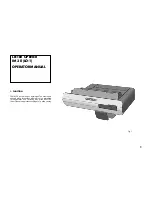
Continued page 6
― 5 ―
4 Specifications
5. Proper Installation
Refer to the product nameplate for detailed specifications.
A Model
B Nominal Diameter
C Maximum Allowable Pressure*
D Maximum Allowable Temperature*
E Maximum Differential Pressure
F Maximum Operating Temperature
G Serial Number
H Valve No.**
C
B
E
G
A
D
F
H
* Maximum allowable pressure (PMA) and maximum allowable temperature (TMA) are
PRESSURE SHELL DESIGN CONDITIONS,
NOT
OPERATING CONDITIONS.
** "Valve No." is displayed for products with options. This item is omitted from the
nameplate when there are no options.
• Installation, inspection, maintenance, repairs, disassembly, adjustment
and valve opening/closing should be carried out only by trained
maintenance personnel.
• Take measures to prevent people from coming into direct contact with
product outlets.
• Install for use under conditions in which no freeze-up will occur.
• Install for use under conditions in which no water hammer will occur.
1. Before installation, be sure to remove all protective seals.
2. Install the steam trap within the allowable inclination, as shown overleaf. Also make sure that
the arrow mark on the body corresponds with the direction of flow.
3. Before installing the trap, blow out the inlet piping to remove all dirt and oil.
4. Install the trap in the lowest part of the pipeline or equipment so the condensate flows naturally
into the trap by gravity. The inlet pipe should be as short and have as few bends as possible.
5. Support the pipes properly within 800 mm (2.5 ft) on either side of the trap.
6. Install a bypass valve to discharge condensate, and inlet and outlet valves to isolate the trap in
the event of trap failure or when performing maintenance.
7. Install a check valve at the trap outlet whenever more than one trap is connected to the
condensate collection pipeline.
8. The use of unions is recommended to facilitate connection and disconnection of screwed
models.
CAUTION






























